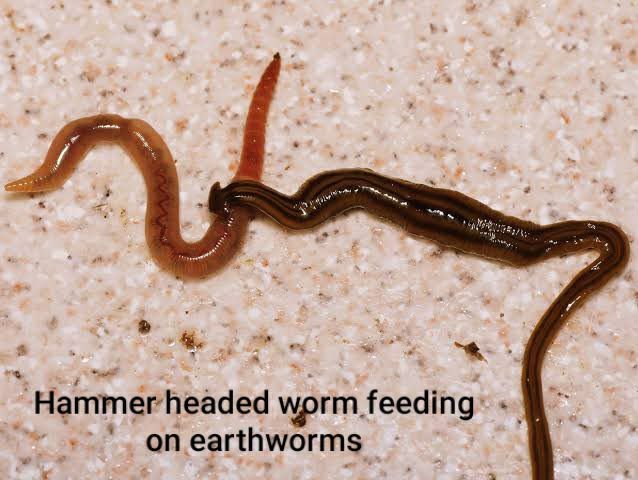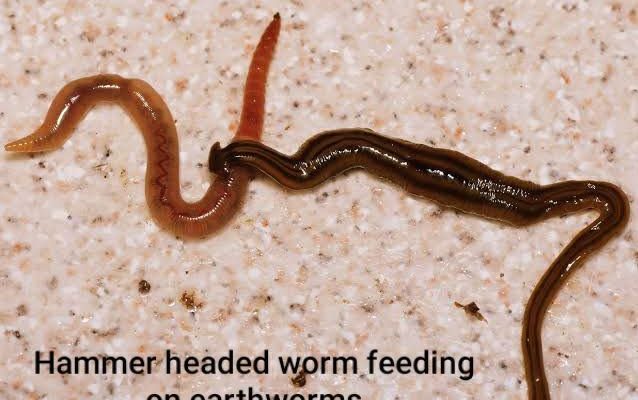
Think of hammerhead worms as the villains in a story where earthworms play the role of the friendly sidekick. Just as a movie often turns on the unexpected turn of events, the presence of these hammerhead worms can drastically change the balance of soil life. Understanding this relationship is crucial, especially for gardeners and those who care about healthy ecosystems. So, let me explain how these unusual worms affect the populations of earthworms we rely on so much.
What Are Hammerhead Worms?
Hammerhead worms are a type of flatworm that belong to the genus *Bipalium*. They’re known for their distinctive, hammer-shaped head that gives them their name. Typically found in warm, moist environments, you’ll often spot them in your garden or under damp logs. The most common species, *Bipalium kewense*, can grow quite large, reaching lengths of up to 12 inches.
These worms are not just any ordinary critters; they’re predatory in nature. Unlike earthworms, which primarily consume organic matter, hammerhead worms are known for hunting down other worms, especially earthworms. They do this using a slimy, mucus-like substance that helps them capture their prey, making them quite the formidable hunter in the soil.
What’s interesting about hammerhead worms is their method of reproduction. They can reproduce both sexually and asexually, which gives them a significant advantage in spreading their population. When conditions are right, they can multiply quickly, further threatening earthworm populations.
Why Earthworms Matter
Before we dive deeper into the impact of hammerhead worms, let’s take a moment to appreciate why earthworms are so important. These little creatures play crucial roles in maintaining the health of our soil.
- Soil aeration: As earthworms burrow through the ground, they create tunnels that allow air, water, and nutrients to reach plant roots more effectively.
- Nutrient recycling: Earthworms break down organic matter, turning it into rich compost that nourishes plants and supports other soil organisms.
- Soil structure: Their activity helps improve soil structure, which is vital for preventing erosion and promoting healthy root growth.
Without a healthy population of earthworms, our gardens and ecosystems can suffer. This is where the conflict with hammerhead worms comes into play.
The Predator-Prey Relationship
So, how exactly do hammerhead worms impact earthworm populations? It’s all about that predator-prey dynamic. Hammerhead worms actively hunt earthworms, and their presence can lead to a decrease in earthworm numbers over time.
When a hammerhead worm comes across an earthworm, it uses its unique hunting method. They secrete a sticky substance that helps immobilize their prey. Once captured, they consume earthworms whole, which can cause a substantial reduction in their numbers. This direct predation is one of the primary reasons earthworm populations may decline in areas where hammerhead worms are present.
Interestingly, while they feed on earthworms, hammerhead worms can also disrupt the balance of the entire ecosystem. Fewer earthworms mean less soil aeration and nutrient recycling, leading to less vibrant plant life and overall soil health. The removal of earthworms can create a ripple effect that impacts other organisms in the soil as well.
How Hammerhead Worms Spread
One might wonder, how do hammerhead worms spread in the first place? Unfortunately, it’s pretty easy for these worms to find new homes. They typically thrive in warm and moist environments, which means they can easily hitch a ride in potted plants, garden soil, or even on gardening tools.
When gardeners unknowingly introduce these worms into their gardens, it can lead to an unexpected surge in their population. Plus, once they settle in, hammerhead worms are hard to get rid of. They can often regenerate after being cut in half, making them resilient survivors.
As more people garden and share soil or plant material, the potential for hammerhead worms to spread increases. This spreading poses a threat not just to earthworm populations but also to the overall health of local ecosystems.
The Best Ways to Manage Hammerhead Worms
If you suspect hammerhead worms are invading your garden, there are steps you can take to manage their population while protecting your earthworms.
- Hand Removal: If you see them, carefully remove hammerhead worms by hand. Use gloves and place them in a bag for disposal.
- Avoid Overwatering: Since hammerhead worms prefer moist environments, reducing excess moisture in your garden may help deter them.
- Introduce Beneficial Nematodes: These microscopic worms can help control hammerhead worms by parasitizing them.
Remember, the goal isn’t to eliminate all hammerhead worms completely—they do have their place in the ecosystem—but to keep their numbers balanced so they don’t overwhelm your local earthworm populations.
Final Thoughts on Hammerhead Worms and Earthworms
The relationship between hammerhead worms and earthworm populations highlights a fascinating yet concerning aspect of nature. Hammerhead worms can significantly impact the health of our soil by preying on earthworms, our garden allies. As we become more aware of these invaders, we can take steps to manage their spread while ensuring our earthworm populations thrive.
By protecting earthworms, we’re not just safeguarding the future of our gardens; we’re also supporting the delicate balance of our ecosystems. Healthy soil leads to healthier plants, which in turn supports a vibrant environment for all living things. Every small action we take can contribute to a more balanced and thriving habitat around us.

